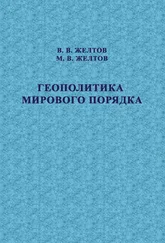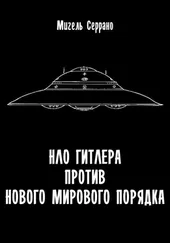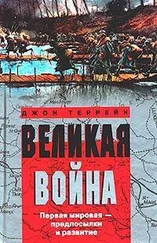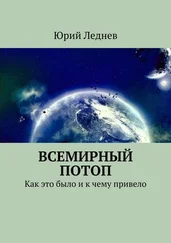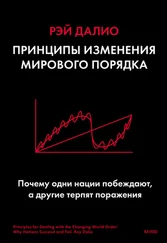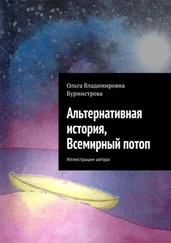M. J. Carley, «Episodes from the Early Cold War: Franco-Soviet Relations, 1917–1927», Europe-Asia Studies 52, no. 7 (November 2000), p. 1, 276.
Document 127, «Russian-American Relations», p. 281.
Переориентация правящих кругов Германии на Запад началась не в 1923 г., а еще осенью 1918 г., как верно подмечено в: G.-H. Soutou, L’Or et le Sang: Les Buts deguerre économique de la Première Guerre Mondiale (Paris, 1989), p. 745.
R. Luxemburg, «What Does the Spartacus League Want?», Die Rote Fahne, 14 December 1918, and The Russian Revolution (written 1918, published Berlin, 1922).
K. Kautsky, Terrorismus und Kommunismus (Berlin, 1919).
H. A. Winkler, Arbeiter und Arbeiterbewegung in der Weimarer Republik (Berlin, 1984), vol. 1.
R. Luxemburg, «The National Assembly», Die Rote Fahne, 20 November 1918.
G. D. Feldman, The Great Disorder: Politics, Economics, and Society in the German Inflation, 1914–1924 (Oxford, 1997).
C. Mathews, «The Economic Origins of the Noskepolitik», Central European History 27, no. 1 (1994), p. 65–86.
G. Noske, Von Kiel bis Kapp. Zur Geschichte der deutschen Revolution (Berlin, 1920), p. 68.
W. Wette, Gustav Noske (Düsseldorf, 1987), p. 289–321.
Mayer, Politics and Diplomacy, p. 373–409; A. S. Lindemann, The «Red Years»: European Socialism Versus Bolshevism, 1919–1921 (Berkeley, CA, 1974); G. A. Ritter (ed.), Die II Internationale 1918/1919. Protokolle, Memoranden, Berichte und Korrespondenzen (Berlin, 1980), vols 1 and 2.
PWW, vol. 53, p. 574.
D. Marquand, Ramsay MacDonald (London, 1997), p. 248–249; C. F. Brand, «The Attitude of British Labor Toward President Wilson during the Peace Conference», The American Historical Review 42, no. 2 (January 1937), p. 244–255.
Ritter, Die II Internationale, vol. 1, p. 208–285.
Ibid., vol. 1, p. 230–243.
О неуместном энтузиазме Гувера в отношении НСДП см. в: Two Peacemakers in Paris: The Hoover-Wilson Post-Armistice Letters, 1918–1920 (College Station, TX, 1978), p. 128–129 and 135–141.
Ritter, Die II Internationale, p. 288–377.
Противоположная позиция о необходимости единства СДП и НСДП ясно изложена в: S. Miller, Burgfrieden und Klassenkampf: Die deutsche Sozialdemokratie im Ersten Weltkrieg (Düsseldorf, 1974), p. 320.
D. Tanner, Political Change and the Labour Party, 1900–1918 (Cambridge, 1990), p. 393–397; R. McKibbin, Parties and People, England 1914–1951 (Oxford, 2010), p. 30.
J. Turner, British Politics and the Great War: Coalition and Conflict, 1915–1918 (New Haven, CT, 1992) p. 319.
Marquand, MacDonald, p. 236.
M. Pugh, Electoral Reform in War and Peace, 1906–1918 (London, 1978), p. 176–177.
M. Cowling, The Impact of Labour, 1920–1924 (Cambridge, 1971).
Tanner, Political Change, p. 403–404.
L. Haimson and G. Sapelli, Strikes, Social Conflict, and the First World War (Milan, 1992); C. Wrigley, Challenges of Labour: Central and Western Europe 1917–1920 (London, 1993); B. J. Silver, Forces of Labor: Workers’ Movements and Globalization since 1870 (Cambridge, 2003).
C. Wrigley, Lloyd George and the Challenge of Labour: The Post-War Coalition, 1918–1922 (Hemel Hempstead, 1990).
B. Millman, Managing Domestic Dissent in First World War Britain (London, 2000), p. 263.
Wrigley, Lloyd George and the Challenge of Labour, p. 223.
Turner, British Politics, p. 314.
Wrigley, Lloyd George and the Challenge of Labour, p. 82.
Ibid., p. 204.
E. Morgan, Studies in British Financial Policy, 1914–1925 (London, 1952).
L. Ross, «Debts, Revenues and Expenditures and Note Circulation of the Principal Belligerents», The Quarterly Journal of Economics 34, no. 1 (November 1919), p. 168.
R. E. Bunselmeyer, The Cost of the War, 1914–1919: British Economic War Aims and the Origins of Reparations (Hamden, CT, 1975), p. 106–148.
E. Johnson and D. Moggridge (eds), The Collected Writings of John Maynard Keynes (Cambridge, 2012), vol. 16, p. 418–419.
B. Kent, The Spoils of War (Oxford, 1991); D. Newton, British Policy and the Weimar Republic 1918–1919 (Oxford, 1997).
M. Daunton, Just Taxes: The Politics of Taxation in Britain, 1914–1979 (Cambridge, 2002), p. 69–72.
D. P. Silverman, Reconstructing Europe after the Great War (Cambridge, MA, 1982), p. 71.
Soutou, L’Or et Le Sang, p. 806–828.
L. Blum, L’Oeuvre de Léon Blum, 3 vols (Paris, 1972), vol. 1, p. 278.
E. Clémentel, La France et la politique économique interalliée (Paris, 1931), p. 343.
A. S. Link (ed.) et al., The Papers of Woodrow Wilson [PWW], 69 vols (Princeton, NJ, 196694) vol 53, p. 550.
T. J. Knock, To End All Wars: Woodrow Wilson and the Quest for a New Order (Princeton, NJ, 1992), p. 224.
Наиболее авторитетной была книга: R. S. Baker, Woodrow Wilson and the World Settlement (New York, 1922), под влиянием которой была написана работа: A. Mayer, Wilson vs. Lenin: Political Origins of the New Diplomacy, 1917–1918 (New York, 1964).
Авторы работ: C. Schmitt, Positionen und Begriffe im Kampf mit Weimar-Genf-Versailles, 1923–1939 (Hamburg, 1940); T. Veblen, «Peace», in Essays in Our Changing Order (New York, 1934), p. 415–422, подвергли Статут критике, считая его подтверждением банкротства либерализма Вильсона, берущего истоки в середине Викторианской эпохи.
PWW, vol. 55, p. 175–177.
PWW, vol. 53, p. 336–337.
Journal officiel de la Républiquefrançaise (Paris, 1918), 29 December 1918, vol. 50, p. 3, 732ff.
PWW, vol. 53, p. 571.
В числе немногих, кто это понял, был W. R. Keylor, «France’s Futile Quest for American Military Protection, 1919–1922», in M. Petricioli and M. Guderzo (eds), Une Occasion manquée? 1922: La reconstruction de L’Europe (Frankfurt,1995), p. 62.
Читать дальше
Конец ознакомительного отрывка
Купить книгу


